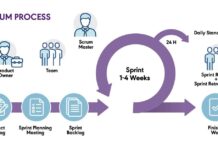Deployment is supposed to be a time to celebrate, but without proper planning, it can become a nail-biting or anxiety-ridden experience.
Use this checklist to evaluate each phase and take control of your software deployment.
| PHASE | FAILURE REASON | ROOT CAUSES |
| Design | Requirements | Poor requirements analysis: Incomplete or unclear requirements can lead to design decisions that do not fully address the desired functionality or user needs. This can result in defects when the implemented software does not meet the intended requirements. |
| Code is Incorrect | Lack of modularity: Inadequate modular design can make the software rigid and difficult to modify or extend. Changes in one part of the system may unintentionally introduce defects in other areas due to tight coupling and lack of separation of concerns. Poor architectural decisions: Incorrect architectural choices, such as inappropriate system decomposition, improper layering, or excessive complexity, can introduce defects that impact the overall system integrity, maintainability, and extensibility. | |
| Data Integrity | Insufficient error handling: Neglecting to handle error conditions appropriately can lead to unexpected behavior or crashes in the software. Designing proper error handling mechanisms, including exception handling and robust error reporting, is crucial for preventing defects. Ineffective data validation and input handling: Failing to validate and sanitize user inputs can open up vulnerabilities such as input injection attacks or data corruption. Proper design should include thorough input validation and handling of edge cases to prevent defects caused by invalid or unexpected data. Inadequate user interface design: Poor user interface (UI) design can result in usability issues, confusion, and user errors. Ineffective layout, unclear navigation, or inconsistent interaction patterns can contribute to defects in user interaction and overall user experience. | |
| Non Functional Design Requirement | Concurrency and synchronization issues: When designing concurrent or multi-threaded systems, incorrect handling of synchronization, shared resources, or race conditions can introduce defects like deadlocks, data corruption, or inconsistent behavior. Inefficient algorithms and data structures: Suboptimal choices of algorithms or data structures can lead to performance issues, such as slow response times or excessive resource consumption. Inefficient design choices can result in defects related to scalability and efficiency. | |
| Testing | Functional Unit Tests | Poorly designed or executed test cases: Test cases that are poorly designed, ambiguous, or do not accurately reflect real-world scenarios can fail to detect defects. Inadequate test data, incorrect assumptions, or flawed test logic can contribute to missed defects. Lack of domain knowledge: Insufficient understanding of the domain or the intended use of the software can lead to incomplete or inaccurate testing. Testers with limited domain knowledge may overlook critical scenarios or fail to identify defects specific to the domain. Inadequate test coverage: Insufficient test coverage, where certain functionalities or scenarios are not adequately tested, can result in undiscovered defects. Missing edge cases, boundary conditions, or specific user interactions may lead to defects in untested areas. Lack of proper regression testing: Changes or updates to the software may inadvertently introduce defects in previously working areas. Without proper regression testing, defects can go unnoticed, leading to regression failures |
| Functional System Tests | Ineffective defect tracking and management: Inadequate tracking and management of identified defects can result in unresolved issues or delayed fixes. Lack of prioritization, poor communication, or inefficient defect triaging can prolong the presence of defects in the software. Missing Integration Tests: Poor environment setup and configuration: Inconsistent or improper setup of test environments, including hardware, software, or network configurations, can introduce defects that are specific to certain environments. Differences between testing and production environments may result in defects not being detected during testing Inaccurate or incomplete test data: Using incorrect or incomplete test data can lead to defects that are specific to certain data combinations or scenarios. Insufficient variety or representation of data can result in undetected defects. Shortcut Unit Acceptance Testing : Tight schedules, limited resources, or time pressures can impact the thoroughness of testing activities. Insufficient time for testing, inadequate allocation of resources, or rushing through test cycles can increase the likelihood of defects being missed. Inadequate collaboration and communication/Missing test strategy or plan: Lack of collaboration and effective communication between testers, developers, and stakeholders can lead to defects. Misunderstandings, misinterpretations, or incomplete information sharing may result in defects being overlooked or incorrectly addressed. | |
| Stress Tests | Insufficient performance testing: Neglecting to perform performance testing can lead to defects related to scalability, resource consumption, or response times. Inadequate load or stress testing can result in performance issues and degrade the user experience. | |
| Change Management (SCM) | Approver Review | Inadequate version control practices: Poor version control practices can contribute to defects. Lack of proper branching, tagging, or merging strategies can result in code conflicts, improper code inclusion, or missing updates, leading to defects in the software. Using a proper pull request strategy is critical to success. |
| Cross Impact of new Code | Inadequate impact analysis: Failure to conduct a thorough analysis before implementing changes can lead to unexpected consequences. If the dependencies and potential effects of a change are not properly evaluated, it can introduce defects in related or dependent areas of the software. | |
| Documentation | Lack of proper change documentation: Incomplete or insufficient documentation of changes can result in misunderstandings or incorrect implementations. Insufficient information about the purpose, scope, or requirements of a change can lead to defects in the modified code or related components. | |
| Readiness Assessment | Poor change prioritization: Changes that are not properly prioritized can result in conflicts, delays, or overlooking critical updates. If high-priority changes are not given appropriate attention, defects related to critical functionality or security can arise. Ineffective communication: Poor communication between stakeholders, developers, testers, and other parties can lead to defects. Misunderstandings, miscommunications, or lack of clarity regarding changes can result in defects caused by incorrect or incomplete implementations. Poor code packaging: if only some parts of the code are signed off for migration to production, then the code and its dependencies must be packaged to ensure the system works as expected. Inadequate rollback or recovery procedures: If proper rollback or recovery procedures are not in place, defects introduced by changes may take longer to address. The inability to quickly revert to a stable state or lack of contingency plans can prolong the presence of defects and impact system stability. | |
| Emergency Change | Inadequate testing of changes: Changes that are not thoroughly tested before deployment can introduce defects. Insufficient regression testing, inadequate coverage of affected areas, or overlooking specific scenarios related to the changes can result in defects going unnoticed. | |
| Unauthorized Change | Unauthorized Changes: Unplanned, spontaneous changes are often not tested very well and promoted with good intention but results in harm and disappointment. | |
| Deployment/ Release | Compatible | Inadequate environment management: Problems related to the release environment, such as inconsistencies between testing and production environments, can cause defects. Differences in hardware, software versions, network configurations, or infrastructure components can lead to defects that only manifest in the production environment. |
| Deployment exe | Configuration errors: Misconfiguration of the software or its dependencies during the release process can introduce defects. Incorrect settings, improper environment configurations, or misaligned dependencies can lead to functional or performance issues in the released software. Incompatible or missing dependencies: Failure to properly manage dependencies or ensure compatibility between components can result in defects. Using outdated or incompatible libraries, frameworks, or third-party services can introduce defects that affect the behavior or stability of the released software. | |
| Rollback | Insufficient rollback or recovery procedures: Inadequate contingency plans or rollback procedures can prolong the presence of defects. If the release introduces critical defects, the absence of proper rollback mechanisms or recovery plans can delay the resolution of the issues and impact the stability of the software. | |
| Release Planning, Scope and Risk | Poor release coordination: Lack of coordination among teams involved in the release process can lead to defects. Inadequate communication, misalignment of release schedules, or incomplete knowledge transfer can result in errors or oversights during the release, leading to defects. Time or resource constraints: Pressure to meet tight deadlines or limited resources during the release process can contribute to defects. Insufficient time for thorough testing, rushing through release activities, or inadequate allocation of resources can increase the likelihood of defects in the released software. Insufficient post-change monitoring and evaluation: Neglecting to monitor and evaluate the impact of changes after deployment can result in undetected defects. Failure to analyze performance, stability, or user feedback can lead to ongoing defects and impact the overall quality of the software. | |
| Other | Security Management | Access Rights |
| Hardware Failure | ||
| DR Issues | ||
| Facilities Management | ||
| Resource Shortage | Deployment SRE Developers Business Relationship for approvals or validations |











